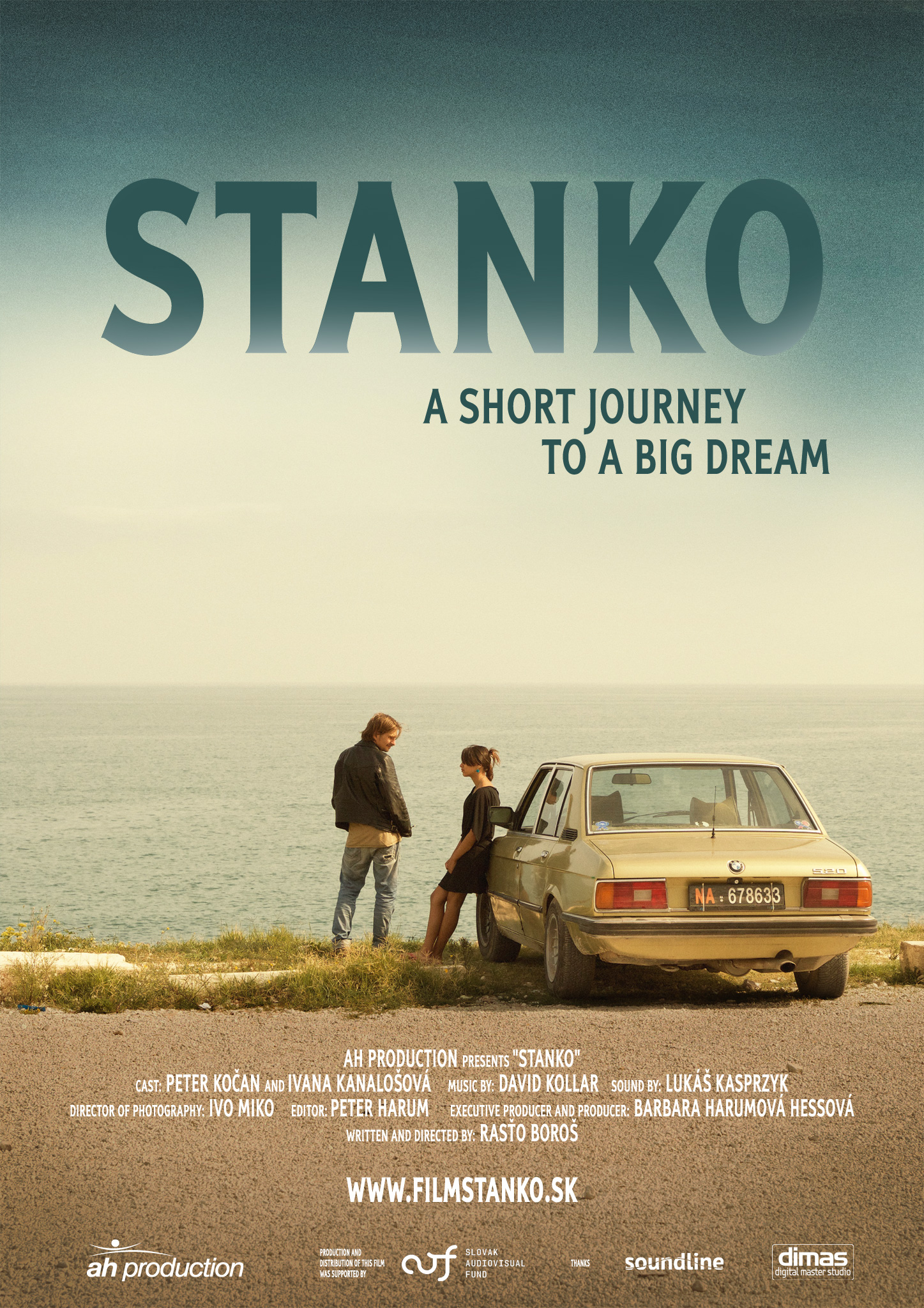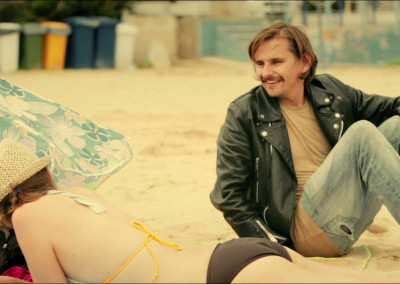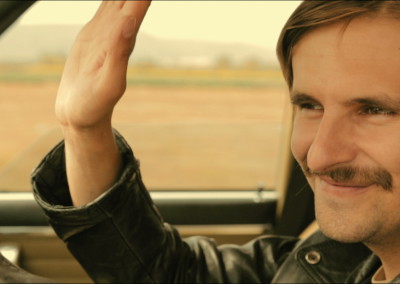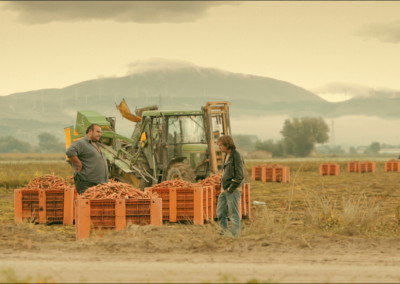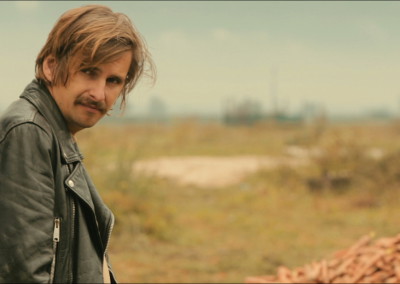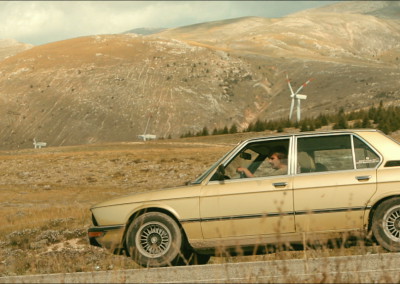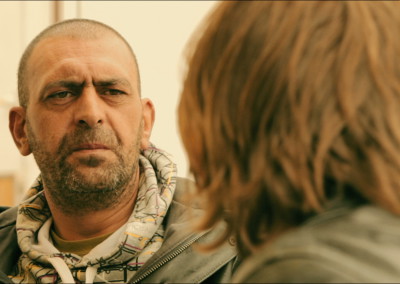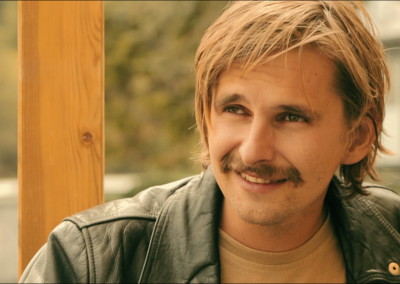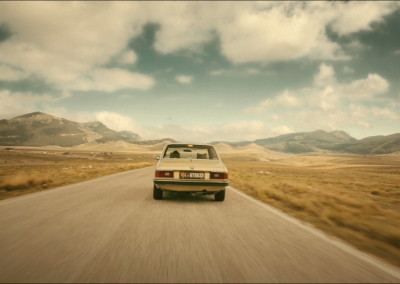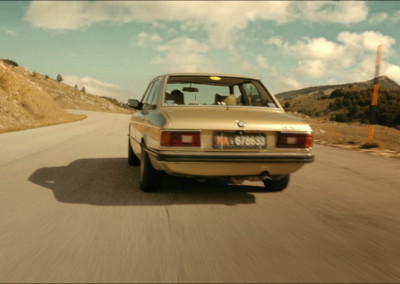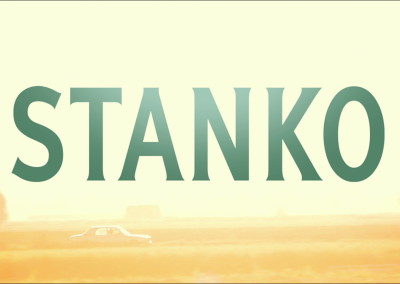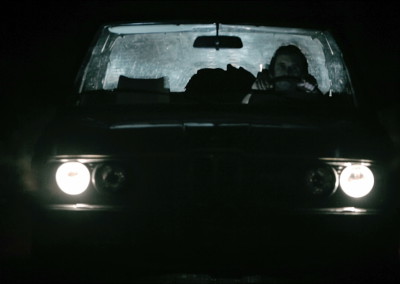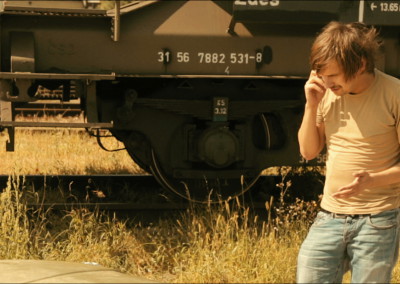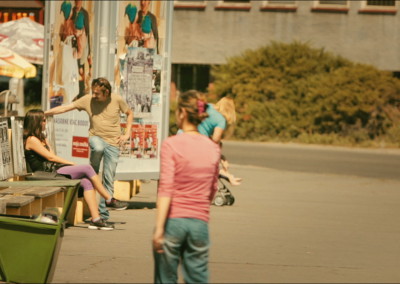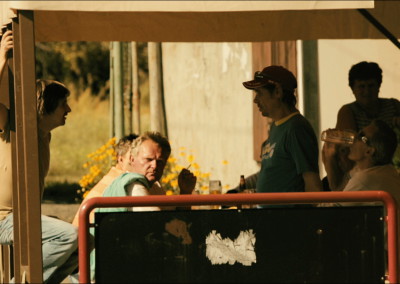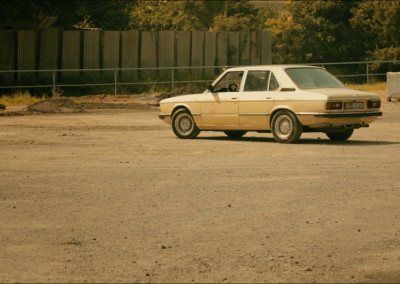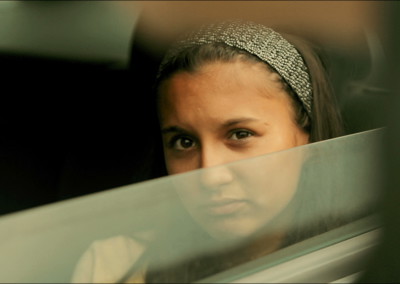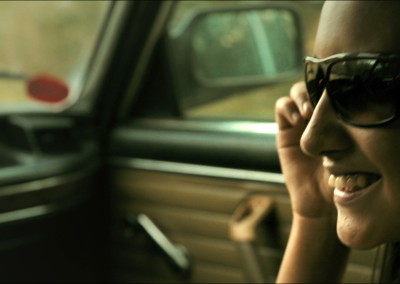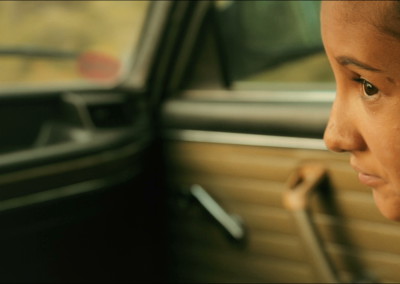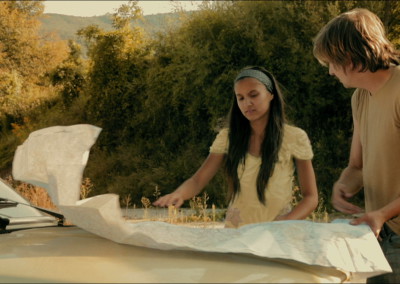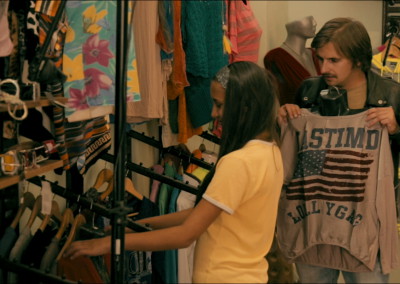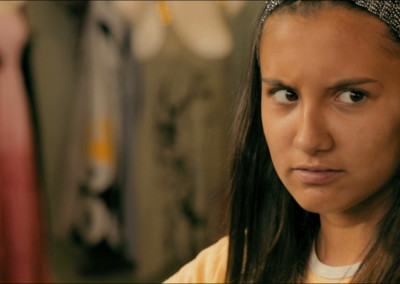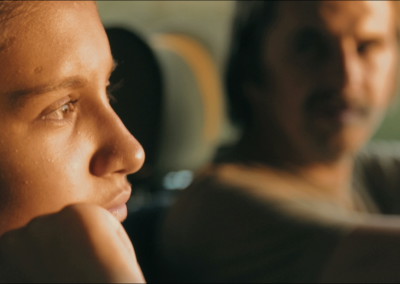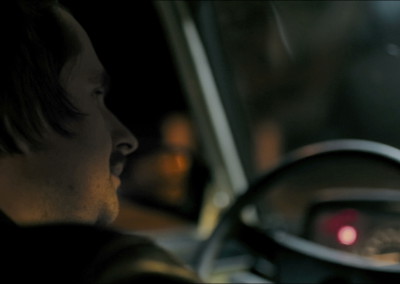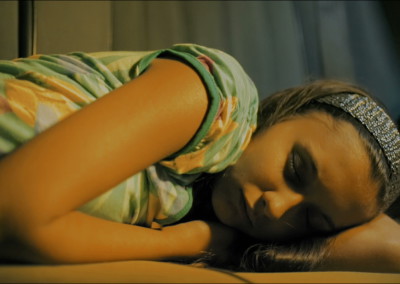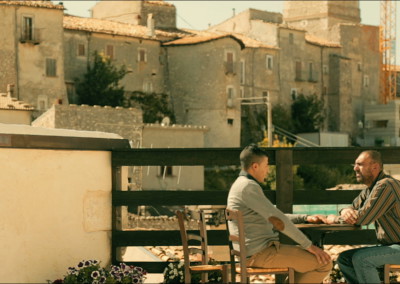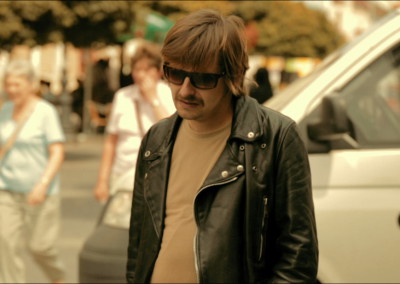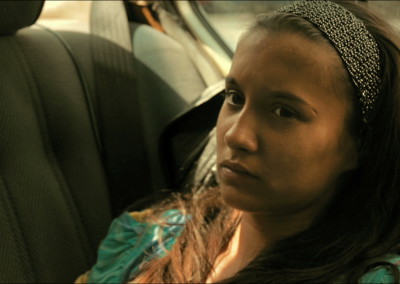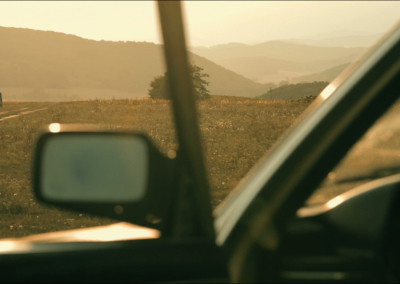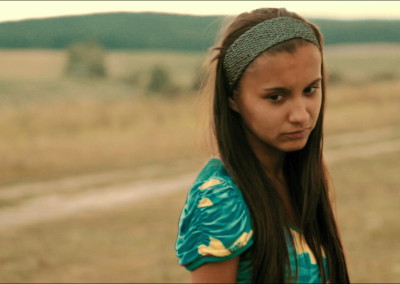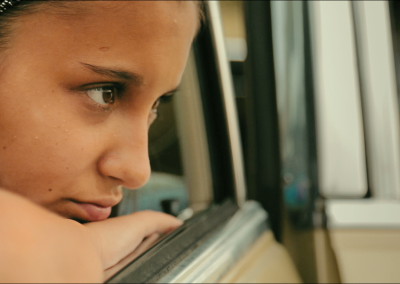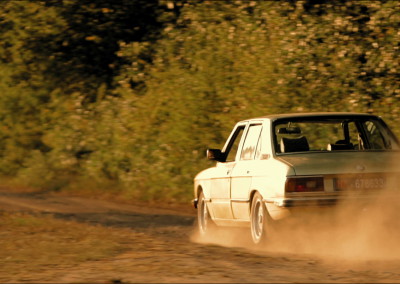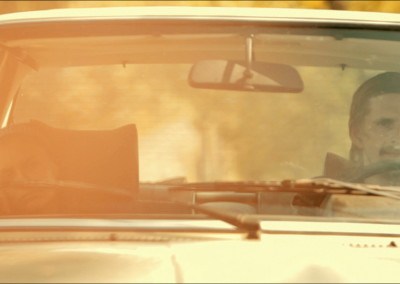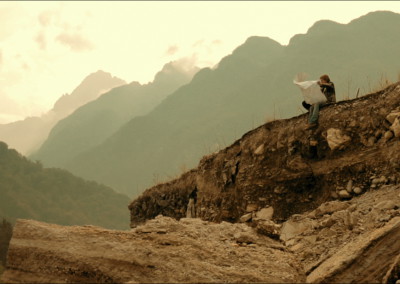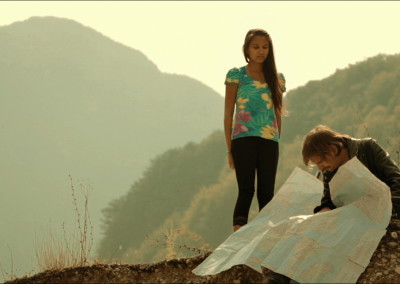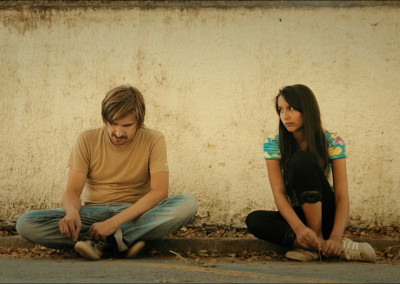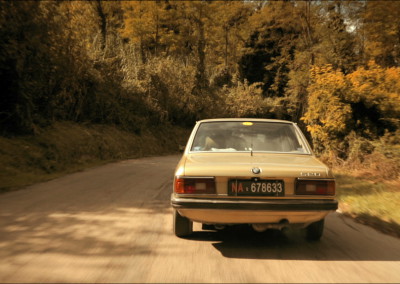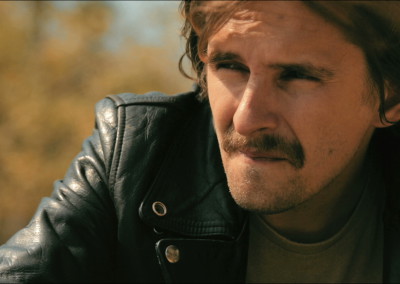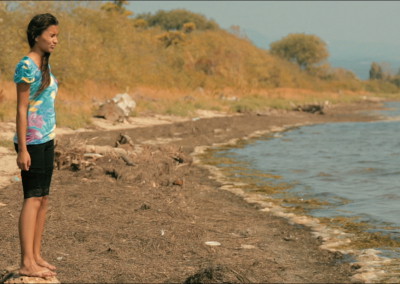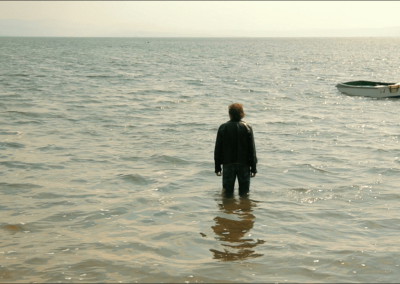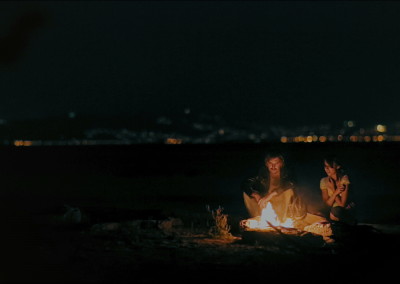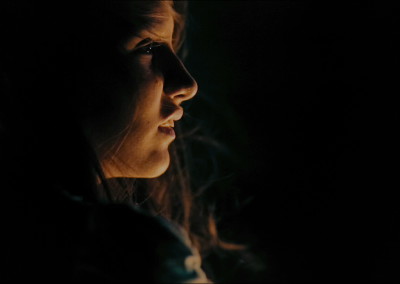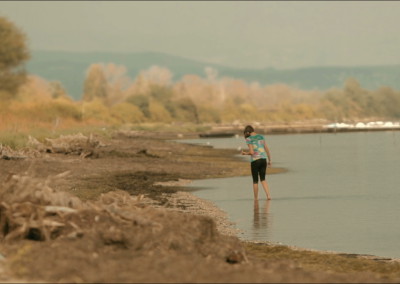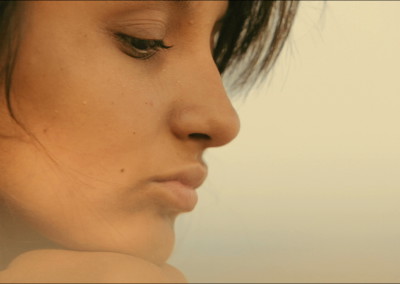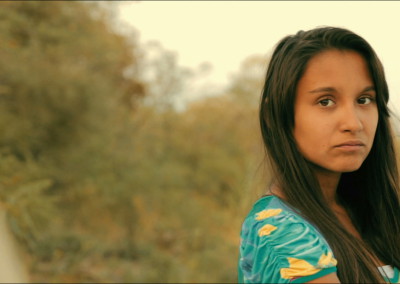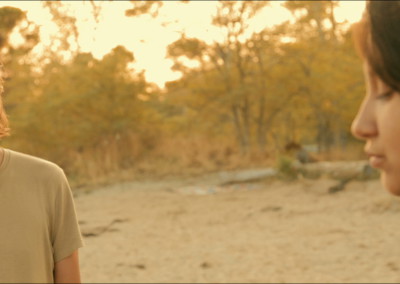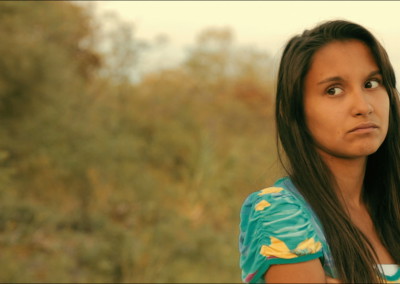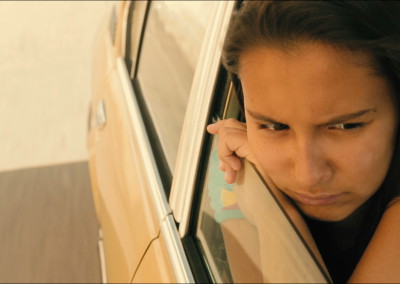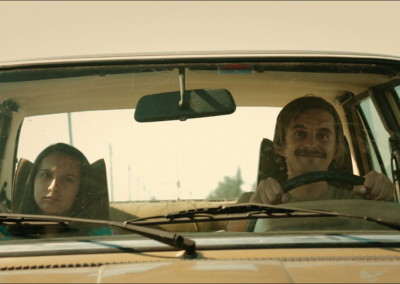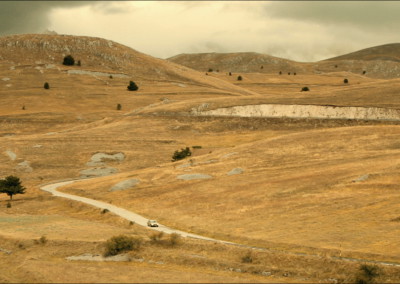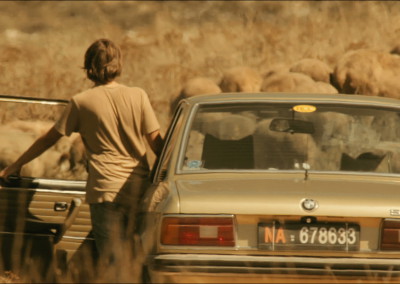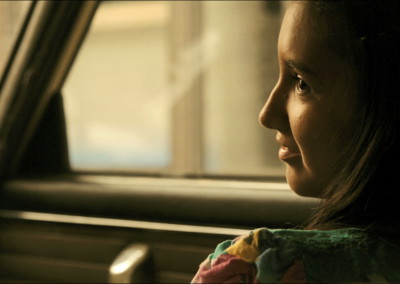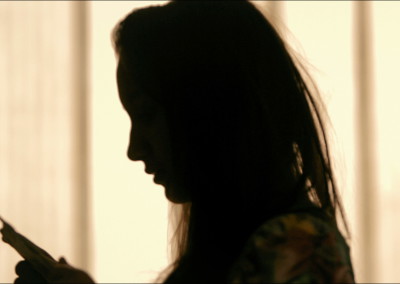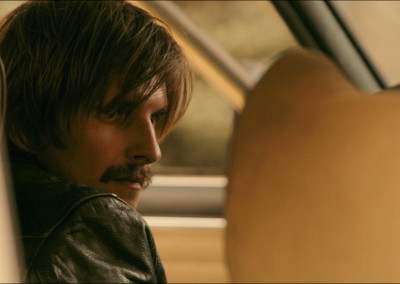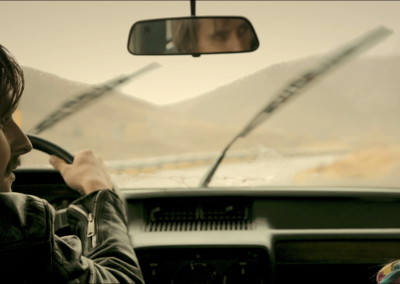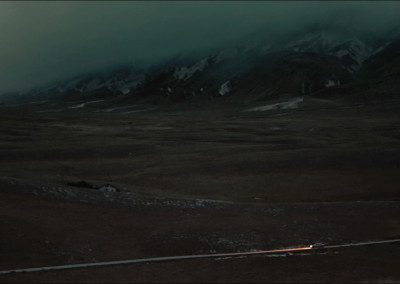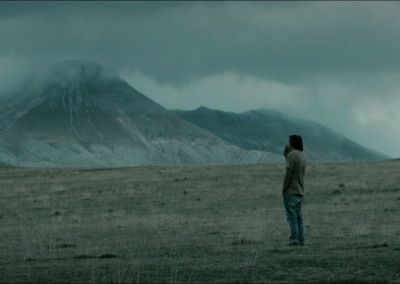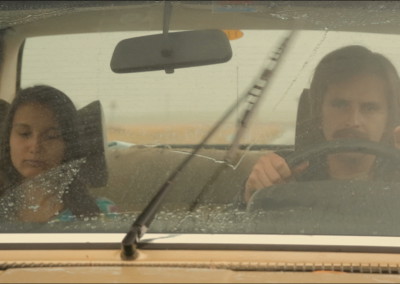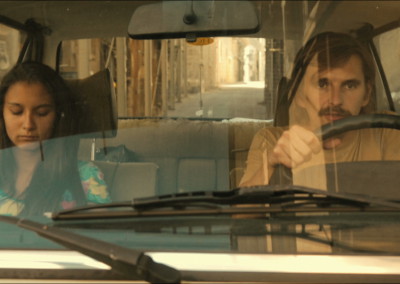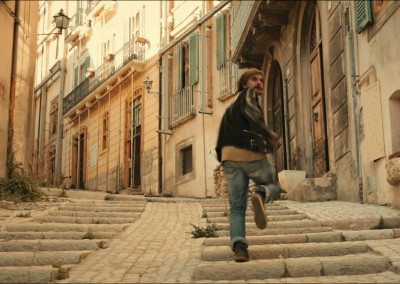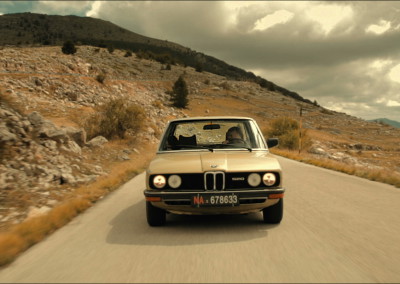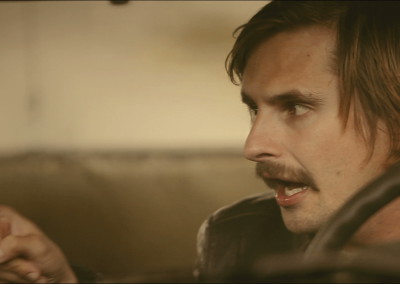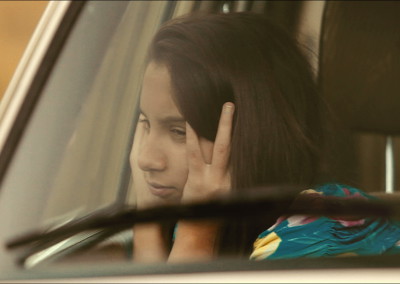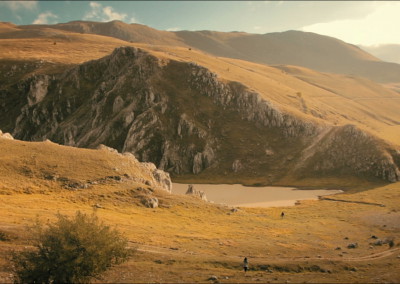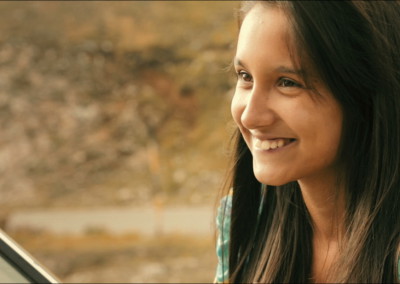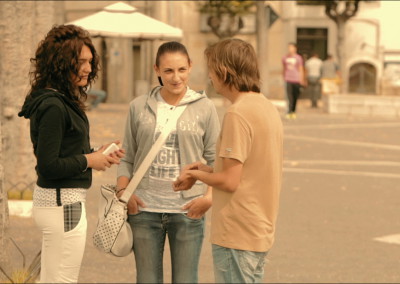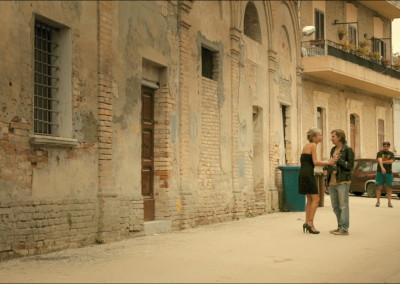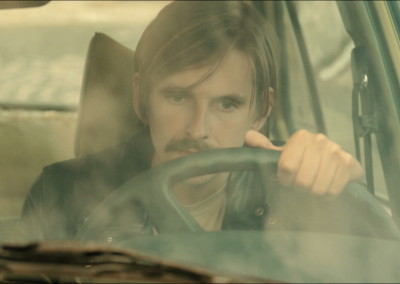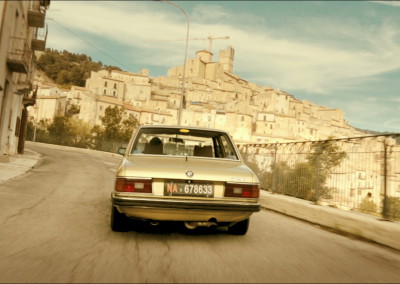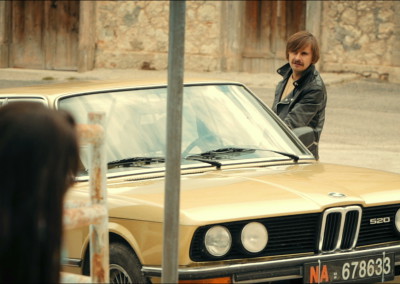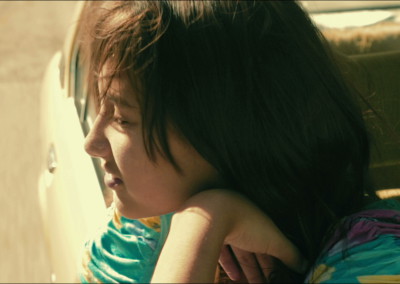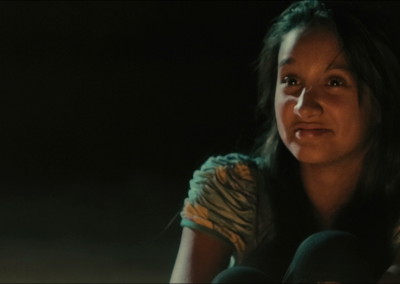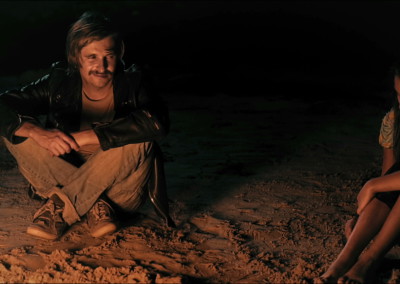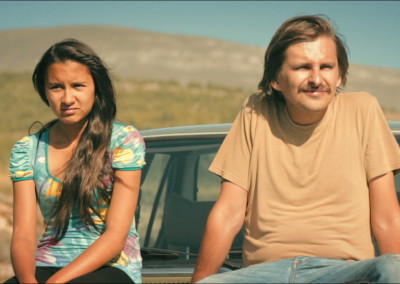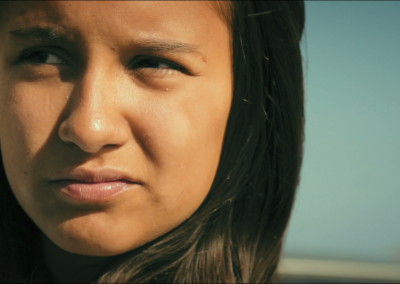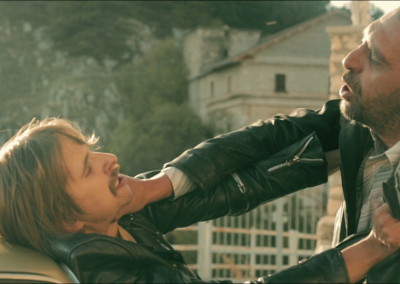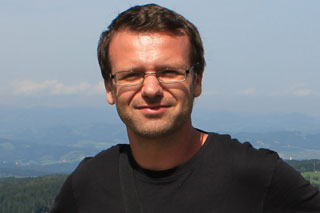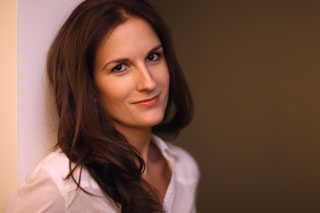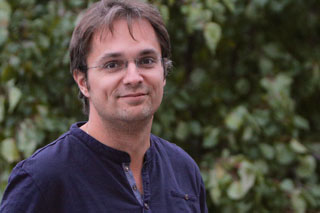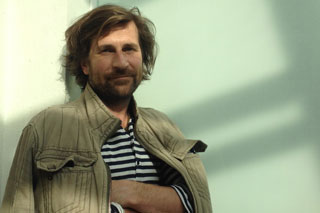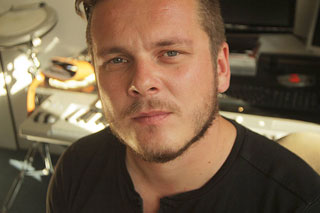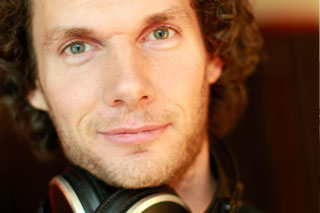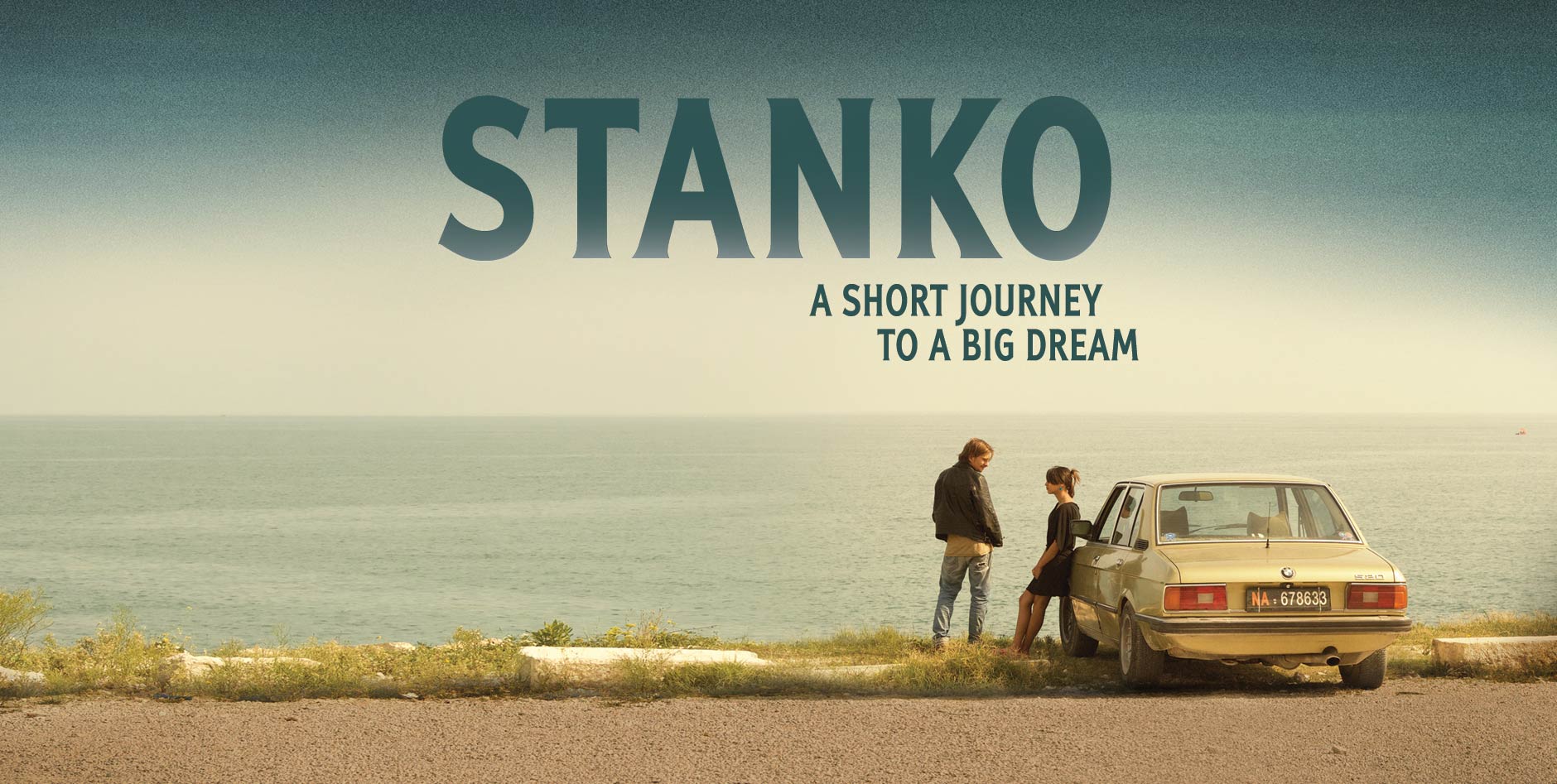
Stanko, a loser, gets his last chance to fulfill a task. The movie deals with the theme of girls trafficking, but tells at first of friendship and universal bonds between two people on the margin of society.
Stanko has lived on Italian farms for years. Because of lies and unkept promises, he finds himself unable to find anyone to lend him any more money. He gets his last chance when his boss Paolo asks him to drive a girl from Slovakia to Italy.
Stanko has no idea what the girls is up to end, in fact, is not really interested. He is determined to get his job done. He wants to do something right, at last. The journey, however, gets unexpectedly complicated. The girl, who at first was nothing but a means of getting out of trouble, becomes his friend.
Stanko is a story of a civilian, taking place in the present, in non-stylized environments, with non-actors, the genre is a tragicomic road movie. The story’s theme deals with girls trafficking, but starts as a tale of friendship and universal bonds between two people on the fringes of society, whom no one needs, and who are, because of their mental state, permanently vulnerable and threatened.
PRESSKIT
SYNOPSIS
Stanko, a loser, gets his last chance to fulfill a task. The movie deals with the theme of girls trafficking, but tells at first of friendship and universal bonds between two people on the margin of society.
Stanko has lived on Italian farms for years. Because of lies and unkept promises, he finds himself unable to find anyone to lend him any more money. He gets his last chance when his boss Paolo asks him to drive a girl from Slovakia to Italy.
Stanko has no idea what the girls is up to end, in fact, is not really interested. He is determined to get his job done. He wants to do something right, at last. The journey, however, gets unexpectedly complicated. The girl, who at first was nothing but a means of getting out of trouble, becomes his friend.
Stanko is a story of a civilian, taking place in the present, in non-stylized environments, with non-actors, the genre is a tragicomic road movie. The story’s theme deals with girls trafficking, but starts as a tale of friendship and universal bonds between two people on the fringes of society, whom no one needs, and who are, because of their mental state, permanently vulnerable and threatened.
TECHNICAL DETAILS
| Title: | Stanko |
| Languages of dialogues: | Slovak, Italian, French, English |
| Sub-titles: | English |
| Length: | 79 minutes |
| Film format: | 2K Scope (2.39:1) Resolution: 2048×858 FPS:25/1 |
| Sound format: | Dolby 5.1 |
| Available on: | DCP 25p, Blu-ray, DVD |
| Genre: | Roadmovie |
| Year of production: | 2015 |
| Status: | World premiere, WARSAW FILM FESTIVAL 2015 (Competition 1-2) |
| Copyright: | AH production |
| Oficial website: | www.filmstanko.sk |
| Facebook page: | facebook.com/filmstanko |
| Trailer Youtube: | youtu.be/hw0xys0LNKY |
| Trailer Vimeo: | vimeo.com/167911783 |
DIRECTOR’S COMMENTS
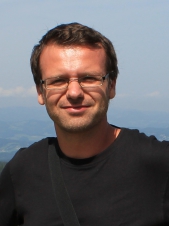 Stanko is a story about friendship, about the elementary bond between people. My intention was to study the formation and evolution of a relationship that arises inadvertently and unexpectedly between two characters with unlucky backgrounds. Consciously each of the main characters desires something else and follows their goals, the goals that are their ideas of happiness. But in fact, they need something different. Someone, who would care about them. In the story I wanted to examine the consequences that come up as a result of such a relationship. In particular, the responsibility for each other and what happens when one wants to manipulate the other for his own benefit.
Stanko is a story about friendship, about the elementary bond between people. My intention was to study the formation and evolution of a relationship that arises inadvertently and unexpectedly between two characters with unlucky backgrounds. Consciously each of the main characters desires something else and follows their goals, the goals that are their ideas of happiness. But in fact, they need something different. Someone, who would care about them. In the story I wanted to examine the consequences that come up as a result of such a relationship. In particular, the responsibility for each other and what happens when one wants to manipulate the other for his own benefit.
The reason I wanted to work on this theme is rooted in the reality that surrounds me. Sincere relationships, in my opinion, are rare these days. People behave cold-heartedly and rationally. They are pragmatic in that they follow their own benefits, and believe achieving them can make them happy. Later, however, they are surprised to find that they are lonely and realize that something significant is missing in in their lives. Stanko, the protagonist of the film, goes through this experience.
I did not want the film Stanko to be a critical socio-psychological drama. To approach the audience I accentuated tragical and comical aspects in the film alike. Therefore I chose actor Peter Kočan to perform the protagonist, who is a tragicomic character. For the rest of the characters I selected non-actors, who are both positively and negatively attractive. And therefore I also chose the environment that changes dynamically throughout the story. The setting is on the road. In terms of genre, the film is a road movie. The story takes place in a confined space – a car that passes through foreign countries. It enables the development of a relationship between two strangers. I chose the road movie genre as my first feature also because I wanted to go beyond the limitations of the highly exclusive Slovak cultural circumstances.
The theme is universal and so is the film. The main character Stanko was based on a story of a real man who I knew and who lived for many years on Italian farms. He moved around dubious environment balancing between the law and imprisonment. He tried to avoid the problems that, however, always found him anyway. Initially, I was tempted to do a documentary film, but I was afraid that revealing the truth about him would ruin his life. Therefore I decided to work on the feature film.
The story of a girl that I met for a brief moment a long time ago resurfaced in my mind again and again and served as a starting point for the development of the female character. She was a young girl from the central Slovakia region, who decided to leave her homeland and try a better life abroad. In the hope of a better future of a dancer she boundlessly trusted a guy who actually drove her to a brothel. I wanted to implement in a low-budget production the mosaic of characters, and their various motivations embedded in the story that takes place on the road. The reason was the creative freedom that I did not want to loose. My intention was to work with a minimal crew that would be able to facilitate unexpected changes during the implementation. I also wanted to cast non-actors, the reason being that I wanted to work with authentic people. They were often cast on the spot of the shooting. The shooting was very challenging. Honestly, I can say that without the people who worked with me, this film would not have been made at all.
Rasťo Boroš
PRODUCER’S COMMENTS
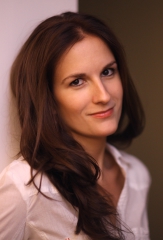 When the screenwriter Rasťo Boroš approached me in 2011, asking me if I would be willing to produce his directorial debut I agreed, beacause his screenplay immediately caught my attention. The central theme was one of sex trafficking in girls; but, above all, it also tells a story of a friendship, a universal bond between two people from the margins of society. A simple road movie as a genre had been absent in the Slovak cinema. But still the movie has the potential to grab attention of the international movie-goer thanks to the universality of the subject matter. Furthermore, a low-budget film production abroad and in a foreign language became the next interesting challenge for me. In 2012, the project named STANKO got supported by Audiovisual Fund as part of the MINIMAL program (for very low-budget genre movies) and was the only one within that program to be realized abroad.
When the screenwriter Rasťo Boroš approached me in 2011, asking me if I would be willing to produce his directorial debut I agreed, beacause his screenplay immediately caught my attention. The central theme was one of sex trafficking in girls; but, above all, it also tells a story of a friendship, a universal bond between two people from the margins of society. A simple road movie as a genre had been absent in the Slovak cinema. But still the movie has the potential to grab attention of the international movie-goer thanks to the universality of the subject matter. Furthermore, a low-budget film production abroad and in a foreign language became the next interesting challenge for me. In 2012, the project named STANKO got supported by Audiovisual Fund as part of the MINIMAL program (for very low-budget genre movies) and was the only one within that program to be realized abroad.
The preparations for the project before the shooting took several months and became rather complicated owing to the language barrier. The likelyhood of shooting the film without getting into trouble with the Italian police had to be adressed through cooperation with the local “Film commisions” that gave us advice and recommendations. However, they did not support us financially. At that time time, I had applied for financial support from RTVS (Slovak Television and Radio), but that application was rejected. I approached a lot of private companies, but none of them would eventually decide to take part in the project. It seemed no one believed in it.
Despite this, I was not willing to give up on my vision of making this film. Considering the determination of the film unit members, the positive creative energy and time possibilities, we did not want to, and as time went even couldn’t, delay production any further. The shooting began with minimum staff in Slovakia (Rimavská Sobota, Poltár, Hnúšťa, Lučenec) and northern and central Italy (the regions of Friuli Venezia Giulia and Abruzzo) in August and September 2012. The Slovak part took us 15 days to complete and went relatively smoothly, except one problem that bothered us till the very end. We were shooting with a 30 years old vehicle and, despite all possible precautions, it got broken while we were still in Slovakia. In that pause lasting several days between the Slovak and Italian parts of shooting, we were forced to find an identical substitute for the car of a very specific colour; that led to the new car’s Czech owner became a member of the film unit for the Italian part. Nevertheless, the substitute car got broken within the first week of the Italian shooting. A certified car service couldn’t find a way to fix that particular type. Communicating Slovak to English to Italian and vice versa proved to be quite challenging. The prospect of the production being aborted, the car having to be towed away, its repair and bringing it back to Italy was an unacceptable option.
Therefore we chose an alternative solution – shooting the scenes that didn’t require the presence of the car in motion. Some scenes were shot with a hauling rope. In spite of the help of automobil enthusiasts from Czech who managed to travel to our location and repair the car additionally, the problems with the car did not end there and merit a separate film adaptation. The production was also made more complicated by the different mentality and work attitude of Italians, which affected our work both directly and indirecty. While shooting in Aquillea, our all-purpose car with a loaded trailer, together with old car got towed away. Thus we lost two vehicles, one for shooting, one for production needs; afterwards, it became impossible to continue filming.
While overcoming unbelievable difficulties getting the car back we lost one valuable day of relaxation and we had unexpected financial expenses. The problems continued with the all-purpose vehicle getting broken in the Grand Sasso national park, where the landscape is one full of hills and serpents. The motorway was closed down. A tyre got a puncture. Huge distances between the filming locations, technical problems with the vehicles, being constantly on the move, packing and unpacking of things and equipment, the film unit members’ obligations had to be coupled with driving, alternative solutions for epizodical characters, etc. All that was too complicated for such small a staff. The 30-day second part of filming in an expensive country with minimal support for a genre movie and plenty of noncontrollable problems became a test of our courage and nerves. Still, we did manage to fulfill the production schedule. Although the low-budget-based project and a minimum number of staffers seemingly allowed for more creative flexibility and freedom, it paradoxically caused the progress of production to be hindered, which would later be reflected in the fact that the consequent post-production lasted, with some interruptions, for three years.
On behalf of the creators I dare say that everyone involved worked on the project with great enthusiasm and really put themselves into it. Despite troubles at the birth of the film, I consider it an exceptional Slovak road movie. It is our pleasure and honour that the film was chosen for the competition at a prestigious A-film festival in Warsaw. Largely, but not exclusively, because of the way the film came into being, I believe the energy that was put into it will transform itself in the form of positive reactions from audience not only at festivals, but also in Slovak movie theaters, where it will be introduced in 2016. A big thanks should go to all members of the filming staff as well as to other people (included in closing credits) who helped to make it possible.
Barbara Harumová Hessová
DOWNLOADS
CREDITS
STORY, SCREENPLAY, DIRECTOR
Rasťo Boroš
PRODUCER
Barbara Harumová Hessová
EDITOR
Peter Harum
DOP
Ivo Miko
SOUND
Lukáš Kasprzyk
MUSIC BY
David Kollar
EXECUTIVE PRODUCER AND PRODUCTION
Barbara Harumová Hessová
CAST
STANKO
Peter Kočan
GIRL
Ivana Kanalošová
MARCEL
Marcel Bobák
ROBBED LADY
Terézia Paprčková
BANK SECURITY
Milan Muránsky
FRENCH NEIGHBOR
Maxim Michel Dominique Grenu
MOTHER’S PARTNER
Roman Fizane
MOTHER
Blažena Brandová
SELLER IN A SHOP
Eva Mácsová
SELLER IN A GAS STATION
Alica Nociarová
ABDUL
Abdlinahed Jabiri
LUIGI
Marco Slivagni
PAOLO
Sergio Germano
ANTONIO
Youssef Haouass
SELLERS IN A JEWELERS
Luciano a Marco Taccone
PROSTITUTE
Viviana Sipio
WOMAN ON THE BEACH
Anna Fair
MAN ON THE BEACH
David Gunn
EPISODIC CAST
Lucia Adamovičová
Vladimír Kosoň
Imrich Riajťúk
Peter Živák
Peter Adam
Alexandra Bódiová
Iveta Murková
Žaneta Polhošová
Barbora Olejníková
Miro Zetoka
Jozef Boroš
Martin Válkovec
Tibor Ošváth
Veronika Žilková
Renáta Kelemenová
Urosso Umberto
Giacomo Cupido
Oleg Yuzcherko
Annoylenia Santilli
Bruna Carlizza
Riccardo Pianacio
Antonio Fegatilli – Toni Mione
Nunzlo Dipietro
Erminia Morgante
Irina Iliescu
Gianvincenzo Sforza
Franz Di Gianni Imperio
Arshdeep Singh
PRODUCTION ASSISTANTS
Mirella Benes
Andrea Biskupičová
Miloš Kotlárik
FIRST ASSISTANT CAMERA
Martin Čech
PROPS AND CONSTRUCTION
Erik Ivančík
Dorka Sykorjaková
Andrea Biskupičová
Barbara Harumová Hessová
Martin Čech
Ivo Miko
Peter Harum
COSTUMES
Peter Kočan
Barbara Harumová Hessová
Andrea Biskupičová
Mirella Benes
DRIVERS
Peter Harum
Martin Čech
Miloš Kotlárik
Dušan Tomeček
Barbara Harumová Hessová
Andrea Biskupičová
Vlado Biskupič
TECHNICAL SUPERVISION
Peter Harum
TRANSLATION OF ENGLISH SUBTITLES
Julia Sherwood
TRANSLATION OF ITALIAN SUBTITLES
Mirela Benes
TRANSLATION OF FRENCH SUBTITLES
Barbara Harumová Hessová
DRAMATURGY OF ENGLISH SUBTITILES
Anna Kareninová
SOUND POSTPRODUCTION
Soundline
DOLBY STUDIO
Dimas Digital Master Studio
5.1 SOUND
Bohumil Martinák
GRADING
Peter Harum
SPECIAL THANKS
Dušan Tomeček
Marek Mádr
Pavel Kotek
BMW E12 520/6 and dead BMW 525
Marek Leščák
Martin Šulík
Rado Dúbravský
Jozef Kanaloš
Vlado Biskupič
City Rimavská Sobota
City Poltár
City Lučenec
Town hall Poltár
Pavel Olšiak
Village Kalinovo
Ján Šárkan
SLZ Hnúšťa
Jaroslava Maceková
Jozef Turoň
SUNOB Capital s.r.o. Nitra
Mária Kečkéšová
Peter Janiš
SLOVNAFT, a.s.
Anton Molnár
Daniel Stopka
Hana Kukučková
Ingrid Kostelníková
Petrol station SLOVNAFT Poltár
Denisa Detvanová
OTP, Rimavská Sobota
Iveta Adamove
Arnold Bugár
Zuzana Krenyitzka
Bar Žltý svet
Karol Bielik
Car spare parts shop Poltár
Anna Balková
Driving school Tuga
Peter Tuček
Elektroexpert
Miroslav Vitko
Roman Gál
Bakers from Poltár
Firefighters from Poltár
Daylight Rental
Tomáš Miťko
Housing agency of the resort
of ministry of defence OF Slovak republic
SAD LUČENEC
VOJTECH KUPKA
Mária Demeová
Anita Obdržálková
Mariana Pehelová
Friuli Venezia Giulia region
thanks for cooperation – Si ringraziano per la gentile collaborazione:
Comune di Pontebba
Comune di Resiutta
Comune di Grado
Comune di Trieste Ufficio Coordinamento Eventi
Friuli Venezia Giulia Film Commision – Guido Cassano
http://www.fvgfilmcommission.com
owners and employers – Proprietà e personale di:
Albergo Caffé Vecchio- Pontebba
Bar Totally Freedom – Sistiana
Gattili di Trieste
Carmelo Settembrino
Eleonora Cavallo – Blooperslab
Abruzzo REGION
under the auspices – Con il Patrocinio di:
Comune dell’Aquila
Parco Nazionale Gran Sasso e Monti della Laga
Comune di San Vito Chietino (CH)
thanks for cooperation – Si ringraziano per la gentile collaborazione:
Comune dell’Aquila – Assessorato alle Politiche Culturali
Comando Polizia Municipale dell’Aquila
Comune di Santo Stefano di Sessanio (AQ)
Parco Nazionale Gran Sasso e Monti della Laga
Comune di Avezzano
Comune di Celano
Comune di San Vito Chietino
owners and employers – Proprietà e personale di:
Ristorante – Bed & breakfast – Locanda sul Lago di Santo Stefano di Sessanio (AQ)
La Locanda delle Streghe – Relais Ristorante di Castel del Monte (AQ)
Bed & breakfast – Le Civette di Castel del Monte (AQ)
Bed & breakfast – Le Scimmie di Castel del Monte (AQ)
Abruzzo Film Commission – Support Service – Ensino Di Cecco
www.abruzzofilmcommission.com
www.facebook.com/pages/Abruzzo-Film-Commission/319493428082409
production and distribution of this film was supported by
AUDIOVISUAL FUND
© AH production, s.r.o. 2015
www.filmstanko.sk
www.ah.sk |


